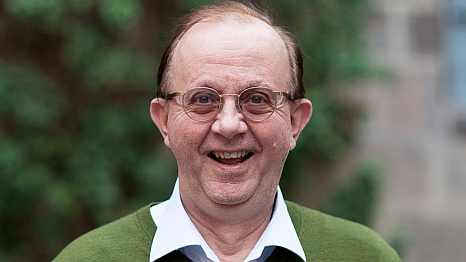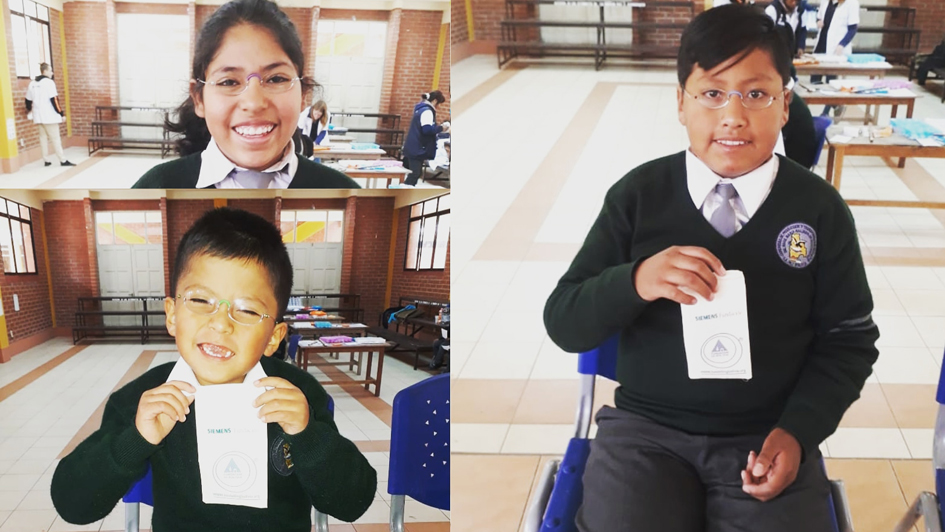
»In the first year alone, we helped 30,000 patients in remote areas.«
Constant dripping wears the stone
When Max Steiner tackles something, the focus is on social commitment and support for the disadvantaged. In Bolivia, the country of origin of his wife and his second home, he finds a broad field of activity with “Lentes al Instante”, the Bolivian organization of EinDollarBrille e.V., and meanwhile also many volunteers who participate in the project.
You have worked for OneDollarGlasses (EinDollarBrille) in Bolivia and other Latin American countries since 2014. How did you come to take on this role, and what motivates your work?
I’ve lived in Bolivia since 2000. Initially, I was involved in the country’s youth hostel movement, which included working with the health sector. Through my honorary professorship at the University of Santa Cruz – which maintains a partnership with the University of Erlangen – I met Martin Aufmuth, the founder of EinDollarBrille e.V. We agreed that we should bring OneDollarGlasses to Bolivia. Since then, we’ve also expanded to Mexico, Brazil, and most recently, Peru. My main motivation is “giving back” and working with people. I take great pleasure in working with our teams on planning deployments to remote areas and seeing these through. It’s a small but important contribution toward improving living conditions for those in need in rural areas. As the saying goes, “constant dripping wears the stone.” In German, the word for ‘stone’ is similar to my last name, so it is a fitting comparison.
You’re familiar with many Latin American countries. What makes Bolivia special, and what are some of the unique challenges in this country?
There is an enormous dichotomy that fascinates and concerns me at the same time. In Bolivia, there is a distinct two-tiered society. Everywhere you turn there are signs of the 500 years of colonial oppression that came after the country was conquered. Even today, indigenous ethnic groups have a hard time in Latin America. Relatively speaking, Bolivia has the largest remaining proportion of indigenous people: around two-thirds of the population are descendants of the original inhabitants of the country. This is especially true on the Altiplano, which sits above 4,000 meters above sea level, and in the roughly 1,000 valleys in the Andes where millions of members of the Quechua and Aymara tribes live. There is a lot of goodwill for helping people in these areas, and I see a lot of potential in that. In the first year alone, we helped 30,000 patients in remote areas, 90 percent of which were home to indigenous people. Our workers are also about 90 percent indigenous and they did not previously have steady jobs. Their expertise is very important for the operational side of our business: it allows us to speak each local language.
You invest a lot in training employees, especially for roles as eye exam assistants. What exactly does this position entail, and how does the training work?
There is a year-long training program to become an eye exam assistant at the local institution Lentes al Instante (LAI). There are theoretical and practical parts of the training. This includes a manual on spherical control and correction, which was developed by OneDollarGlasses and has been deployed internationally. By the end of the training, each participant can conduct vision tests, make an initial diagnosis, and adjust and correct glasses on site. We can help more than 60 percent of patients with spherical correction alone. We have already trained up more than 50 people. In some cases, we help employees take part in a four-year course of study to become opticians. Becoming an eye doctor involves very intense training, which is why eye doctors are usually only found in clinics in large cities. Less populated areas can be covered well with eye exam assistants and with selected deployments of opticians.
You and your team cover quite a lot of ground with your campaigns. Many of your patients are schoolchildren. What is the impact of your work in schools?
OneDollarGlasses has made providing these services in schools one of our main goals. What good is it when there are more schools and motivated teachers when the children can’t read the blackboard because they have vision problems? In Bolivia, you can assume that around 20 to 30 percent of schoolchildren can’t see well. That is a lot, especially when you consider that their vision problems are usually quite easy to fix.
Finding the right prescription is a very important part of the training. Usually, we approach new villages by speaking with the mayor and the headmaster of the school. Often it is the first time they have considered vision problems among the residents and children. We start our campaigns at the schools, that is the main emphasis. Later, the wider population gets involved by word of mouth and by public campaigns about vision testing.

What would you describe as the entrepreneurial aspects of LAI in Bolivia? Do you target financial contributions from independent organizations?
For me personally, I can’t take off my entrepreneur hat. I was in business myself for 30 years. Having a big heart and the desire to help are no longer the only things you need. We have established our business as a social enterprise. Our employees can expect fair market compensation, which can be on par with that of an elementary school teacher.
We don’t and can’t try to maximize our profits. That means our income is based on a combination of donations and sales. Children and disabled people receive our glasses for free, older people get a 50 percent discount. After discussions with local populations, we set a socially affordable price of 80 bolivianos (around 10 euros) per pair of glasses. That is lower than the cheapest glasses imported from China, which cost 120 to 150 bolivianos, and includes the vision test. The revenue generated by selling glasses covers the cost of our campaigns. The next step is expansion and increased investment in the targeted efforts at schools, as the business is not sustainable otherwise.
How do you manage the risk of negatively influencing the local market with glasses that have been subsidized through donations?
Without a doubt, many opticians initially think we might cut into their business. But in most cases, after speaking with them, we can put their minds at ease. We are not operating in cities, where opticians have focused their efforts. We also work with certain opticians to treat cases where the cornea is distorted. These can only be fixed with glasses from an optician. We refer around a third of our patients to them. This endears us to many opticians, even if we offer our patients a large discount of up to two-thirds off the normal price.
Looking ahead to the future, what would be your dream for Bolivia and Latin America? What do you hope to achieve?
In Bolivia, my biggest hope is that things remain stable in terms of the country’s politics and democracy. I’d also like to see us reach 20,000 patients this year and in years to come. That is a pretty good number for such a small country. More than 100,000 glasses in the next five years – that would be my biggest wish.
Other than that, our expansion in Brazil is a priority. We’re aiming for 30,000 glasses per year so that we hit 100,000 in the next three years. In Peru, we’d like to achieve a similar level of coverage to Bolivia when it comes to the indigenous aspect and are concentrating on the poorer areas surrounding Lima. I’d like to see us hit 20,000 glasses per year there, too. In Mexico, we are changing our cooperation partner. Beyond that, we’d like to get involved in the northern part of Argentina, the poorer areas of Paraguay, and in Colombia. In Colombia, we are looking at underprivileged areas that were formally controlled by FARC or areas that have been strongly impacted by the wave of refugees from Venezuela
Max, thank you very much for the interview. We wish you the best for everything you have planned!
My thanks to you as well: without support from Siemens Stiftung, it wouldn’t be possible.
August 2019


